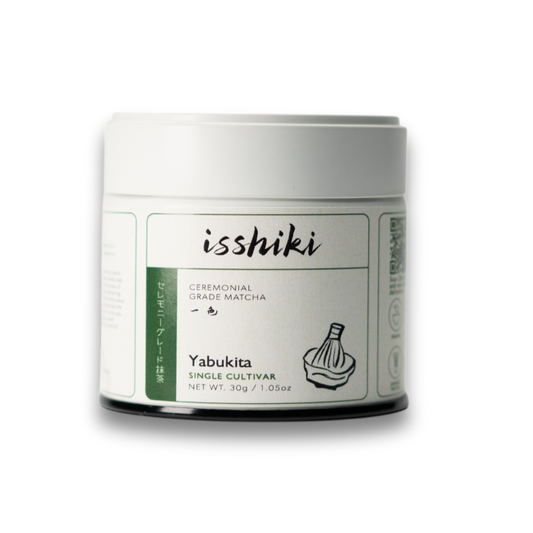Why Most People Mess Up Their Matcha—and How You Won’t
Alright, let’s cut the fluff. If you dropped real cash on ceremonial grade matcha, but it’s tasting bitter, flat, or just… meh—you’re probably screwing up the whisking. Yeah, that little step you thought didn’t matter? It’s everything.
This isn’t protein powder. You don’t just stir it and go. Real matcha, especially the top-shelf ceremonial matcha straight outta Japan, needs some respect. You gotta treat it like the sacred, shade-grown, stone-ground green gold that it is.
And don’t worry—once you learn the technique, it’s easy. No tea ceremony snobbery here. Just real talk, pro tips, and the step-by-step you actually need to whisk matcha like a boss.
Let’s get into it.
Gear Up: What You Actually Need to Whisk Matcha Like a Pro
You can’t roll up to a matcha session with a spoon and a coffee mug and expect greatness. If you want that thick, creamy froth and smooth flavor (not bitter grass juice), you gotta come correct with the right tools.
Here’s your matcha starter pack—don’t skip:
-
Chasen (bamboo whisk): This is your MVP. No chasen = no froth. End of story.
-
Chawan (matcha bowl): Wide, deep, and made for whisking. No, your cereal bowl won’t cut it.
-
Chashaku (bamboo scoop): Fancy? Maybe. But it helps with getting the perfect matcha-to-water ratio.
-
Sifter: If your matcha’s clumpy, you skipped this. Rookie move.
-
Kettle with temp control: Because boiling water is matcha’s worst enemy.
Pro tip: Get a full matcha set online from a trusted U.S. supplier. Tons of brands are shipping legit Japanese-made tools now, and they’re worth every penny if you’re serious about your green game.

The Real Way to Whisk Ceremonial Grade Matcha (No BS)
So here’s how the pros do it—and how you should too.
1. Warm up your tools
Pour some hot water into your chawan. Let it sit for 10–15 seconds. Swish it around. Toss the water. This warms the bowl and softens the whisk.
2. Sift your matcha
Drop 1–2 chashaku scoops (roughly 1 tsp) of ceremonial grade matcha through a fine mesh strainer. Trust—this step is crucial for that silky smooth finish.
3. Add hot (not boiling) water
Use about 2 ounces of water at 160°F–175°F. If you pour boiling water on your matcha, you’re burning it alive. Let your kettle chill for a few minutes after boiling.
4. Time to whisk (the right way)
Hold your chasen like you mean it. Whisk briskly in a “W” or “M” motion, not circles. Think fast wrist flicks. You’re not stirring soup—you’re building foam.
Go for about 15–20 seconds, then slow down at the end with a gentle swirl to pop any big bubbles.
5. Drink it straight
Ceremonial matcha isn’t for lattes. Don’t drown it in milk or honey. Sip it like a Japanese tea master—smooth, focused, and with full-on matcha energy.
Rookie Mistakes That Are Killing Your Matcha Game
Let’s be real—most Americans make these mistakes. Don’t be most people.
-
Boiling water: Scorches the matcha. Tastes bitter and flat. Just... no.
-
No sifter: You’ll get clumps. No one wants a gritty sip.
-
Stirring instead of whisking: Big mistake. You want froth, not sludge.
-
Wrong bowl: Mugs are too narrow. You need room to move that whisk.
-
Cheap culinary matcha: This isn’t the time for the $7 Amazon blend. Only ceremonial matcha powder will froth right and taste smooth.
If Your Matcha Ain’t Frothing, Here’s Why
So you did all the above, but your matcha still looks like sad green soup? Don’t worry—here’s the fix:
-
Make sure your chasen is dry and fresh (old ones lose their flex)
-
Sift that matcha, always
-
Use fast, loose wrist movement, not elbow stirring
-
Stick to small batches (2 oz water) for max froth
If it still won’t froth? Your matcha might be the problem. Only legit ceremonial grade matcha froths right. That cheap, dull-green powder from your local store? Trash it.
Don’t Use a Coffee Mug—Here’s the Bowl You Actually Need
Look, I get it. You're hyped, your matcha just landed, and your first instinct is to scoop some into your favorite coffee mug. Stop. Right. There.
Ceremonial matcha and mugs don’t mix. The sides are too steep, the opening’s too narrow, and you can’t get a proper whisk motion in that tight space. You’ll end up with a weird half-froth, uneven texture, and sore wrists.
What you want is a chawan—a traditional Japanese matcha bowl. And here’s why it slaps:
-
Wide, shallow design = full whisk control
-
High walls = no splashing
-
Ceramic texture = holds heat just right
A proper chawan also sets the vibe. This isn’t just some trendy drink—it’s a moment. A ritual. That bowl is part of the experience.
Bonus tip: If you’re just getting started, grab a U.S.-based brand that sells ceremonial matcha kits. A lot of them offer beautiful, handcrafted bowls that look dope on your counter and make whisking way easier.
The Matcha Sifter: The Tool Everyone Skips (and Regrets)
If your matcha’s coming out clumpy, chalky, or uneven, this one’s for you. You have to sift your ceremonial grade matcha powder before adding water.
Why? Because matcha is super fine. It clumps due to static, moisture in the air, or just sitting around. And once water hits those clumps? You’re stuck with gritty green lumps.
Here’s how to do it right:
-
Grab a fine mesh strainer or sifter (matcha-specific ones are best)
-
Use your chashaku or spoon to press the powder through gently
-
Sift directly into your chawan
This takes 10 seconds. Maybe 15. But it’ll give you that ultra-smooth, velvety matcha texture every single time. No clumps, no regrets.
So if you’re serious about your whisk game, don’t skip the sifter. It’s the secret weapon of every legit matcha pro.
Ceremonial Matcha vs. Culinary: Why Whisking Only Works for the Good Stuff
Here’s something no one tells you: you can’t whip bad matcha into greatness—no matter how hard you whisk.
If your matcha’s yellowish, bitter, and dusty, it’s probably culinary grade, not ceremonial. And that’s fine—for baking, smoothies, protein shakes. But if you try to whisk it the traditional way? It won’t froth. It’ll taste harsh. You’ll hate it.
Here’s the cheat sheet:
|
Type |
Use For |
Froths? |
Flavor |
|
Ceremonial Grade Matcha |
Whisking, sipping straight |
✅ |
Smooth, sweet, mellow |
|
Culinary Grade Matcha |
Cooking, blending, lattes |
❌ |
Bitter, bold, grassy |
So if you’re buying matcha off Amazon for $9 and wondering why it’s not foaming up like TikTok videos—it’s not your fault. It’s your matcha. Upgrade to a fresh, vibrant, ceremonial grade matcha powder from Japan and everything changes.
Traditional Whisk vs. Modern Tools: Should You Use a Frother or Blender?
You’ve probably seen someone use an electric milk frother, or worse—a full-on blender—to “whisk” matcha. Let me be real with you: that’s not whisking, that’s cheating.
Do they work? Yeah, kinda. Will they ever replace a bamboo chasen? Absolutely not.
Here’s the deal:
-
Electric frothers can mix matcha, but they don’t aerate it properly
-
Blenders overdo it and kill the delicate flavor
-
Metal whisks are just awkward and clunky in a bowl
A real chasen:
-
Builds microfoam
-
Enhances taste
-
Respects the tradition (and trust me, that matters)
So if you want to hack your latte, sure—frother it up. But if you’re prepping straight ceremonial matcha, give it the real treatment. You’ll feel the difference.
How to Clean and Store Your Matcha Whisk (Without Ruining It)
Here’s the part most people skip—and then wonder why their whisk looks like a soggy spider after a week.
Cleaning your chasen the right way keeps it going strong for months. Here's how to do it:
Rinse immediately after use
Don’t let matcha dry on the bristles. Just run it under warm water and gently shake it off.
No soap
Never use dish soap. It ruins the bamboo and the flavor of future matcha.
Let it air dry upright
Use a whisk stand (kusenaoshi) if you have one. It keeps the shape perfect. If not, dry it upright—never flat or bristles-down.
Don’t put it in the dishwasher
I shouldn’t even have to say this, but yeah… don’t.
Your whisk is your ride-or-die. Treat it right, and it’ll froth matcha like a champ every single time.

Bonus Ritual: Bring a Little Japanese Tea Ceremony Into Your Morning
Making matcha isn’t just a caffeine hit—it’s a ritual. A vibe. A way to slow down before your day hits full speed.
Here’s how to elevate your routine:
-
Set your tools up neatly
-
Focus on the whisking, the aroma, the texture
-
Sip it slow—no phone, no rush
-
Breathe, stretch, exist
It’s not just about the tea. It’s about taking a moment for yourself.
And when you’re doing it right—with premium Japanese ceremonial matcha, smooth technique, and all the right tools—it feels like you’ve stepped out of time for a minute.
Conclusion: Your Matcha, Done Right
Whisking matcha isn’t just a “step” in the process—it is the process. And when you do it the traditional way? Everything changes.
-
Your matcha is smoother.
-
Your energy feels cleaner.
-
Your morning becomes a ritual, not a rush.
So get the tools. Sift the powder. Whisk like you mean it. Sip like a monk.
And don’t settle for bitter, weak, clumpy matcha ever again.
































